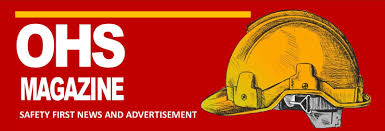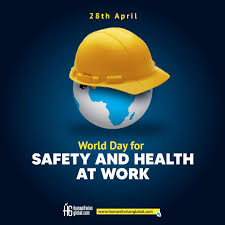OHS News By McRey, OHS Magazine Editor
OHS News. Occupational Health and Safety (OHS) continues to be a critical issue across industries worldwide. As businesses evolve and workplaces face new challenges, the need for up-to-date OHS protocols becomes more important than ever. In this edition of OHS News, we explore the latest developments, regulatory updates, and emerging trends in OHS that organizations must be aware of to ensure the safety and well-being of their employees.
1. New Safety Regulations and Compliance Updates

One of the most significant changes in OHS over the past year has been the introduction of new safety regulations designed to protect workers in high-risk environments. Government agencies like the Occupational Safety and Health Administration (OSHA) in the U.S. and other international OHS bodies have updated guidelines to address issues in modern workplaces. OHS News
Key Changes to Watch:
- Heightened Safety Standards in Construction: New regulations focusing on fall protection, scaffolding safety, and the use of heavy machinery are becoming stricter. The construction industry, which historically has one of the highest rates of workplace injuries, will see an increase in safety audits to ensure compliance.
- Health Protocols for Chemical Exposure: There has been an increase in standards related to the handling of hazardous substances, particularly in industries like manufacturing, healthcare, and laboratory settings. Stricter rules around ventilation, PPE use, and proper disposal methods are now being enforced to minimize exposure risks.
- Mental Health and Wellness in the Workplace: The integration of mental health support into OHS policies is gaining traction. New regulations now recommend that employers include mental health assessments and support programs as part of their overall OHS strategy, recognizing that psychological safety is as important as physical safety.
2. Technology in OHS: Revolutionizing Workplace Safety
Technology continues to play a transformative role in the world of workplace safety. Emerging tools such as artificial intelligence (AI), wearable technology, and virtual reality (VR) training programs are helping businesses identify risks, prevent accidents, and improve safety protocols.
Key Technological Trends:
- Wearable Safety Devices: Wearable technology, such as smart helmets, exoskeletons, and safety vests equipped with sensors, is becoming increasingly common in industries like construction and manufacturing. These devices monitor workers’ movements, posture, and surroundings to detect potential hazards in real-time, alerting them to take corrective action before an accident occurs.
- AI and Predictive Analytics: AI is being used to analyze large datasets from workplace incidents, near-misses, and safety audits to predict future risks. By identifying patterns, businesses can implement targeted safety measures, reducing the likelihood of accidents and improving compliance with OHS regulations.
- Virtual Reality Training: VR is revolutionizing safety training, particularly in high-risk industries. Employees can now be immersed in realistic scenarios, allowing them to practice responding to emergencies or risky situations without real-world consequences. This hands-on approach has proven to be more effective than traditional classroom training, enhancing safety awareness and response times.
3. Workplace Injury Trends: What the Data Tells Us
Recent OHS statistics provide valuable insights into the types of injuries most commonly reported in various industries. By analyzing this data, companies can better understand the areas where additional safety measures are needed.
Top Workplace Injury Trends in 2024:
- Musculoskeletal Disorders (MSDs): These injuries, caused by repetitive motion, overexertion, and poor ergonomics, continue to be among the most reported workplace injuries. Office environments, factories, and warehouses are particularly prone to MSDs, with back injuries, carpal tunnel syndrome, and joint pain topping the list.
- Slips, Trips, and Falls: These remain a leading cause of workplace injuries, especially in industries like construction, retail, and healthcare. The data shows that while many businesses are implementing measures such as anti-slip flooring and regular hazard inspections, more needs to be done in terms of employee awareness and training to reduce these incidents.
- Machinery-Related Injuries: In manufacturing and agricultural settings, accidents involving heavy machinery, such as being struck by equipment or entanglement, are still prevalent. These accidents often result in severe injuries or fatalities, underscoring the importance of stringent machinery safety protocols and regular maintenance.
4. Mental Health in the Workplace: The New Frontier for OHS
One of the most significant shifts in OHS over the last few years has been the growing recognition of mental health as a crucial component of workplace safety. The COVID-19 pandemic highlighted the need for businesses to address stress, anxiety, burnout, and other mental health issues that impact employee well-being and productivity.
Key Mental Health Initiatives:
- Employee Assistance Programs (EAPs): More organizations are integrating EAPs to provide confidential mental health support to employees. These programs offer counseling services, stress management resources, and guidance for dealing with personal or work-related challenges.
- Work-Life Balance Policies: Businesses are adopting flexible work schedules, remote work options, and workload management strategies to reduce employee stress and improve mental health. By promoting a better work-life balance, companies can reduce the risk of burnout and improve overall job satisfaction.
- Training for Managers: Employers are increasingly providing mental health awareness training for managers and supervisors. This training helps leaders recognize signs of stress or mental health struggles in their teams, fostering a more supportive and responsive workplace culture.
5. OHS Best Practices: Lessons from Leading Organizations
Leading organizations around the world are setting new standards for OHS by implementing best practices that go beyond basic compliance. By fostering a proactive safety culture, these companies have successfully reduced workplace injuries and improved employee engagement.
Best Practices from Industry Leaders:
- Safety as a Core Value: Companies like DuPont and ExxonMobil are recognized for making safety a core part of their organizational culture. By embedding safety into every level of the business, from top management to frontline workers, these organizations demonstrate their commitment to employee well-being.
- Regular Safety Audits and Feedback Loops: Frequent safety audits help identify potential hazards before they lead to accidents. Organizations that conduct regular safety checks, coupled with feedback from employees, have been able to continuously improve their OHS standards.
- Employee Engagement in Safety Initiatives: Engaging employees in the development and implementation of safety protocols leads to higher buy-in and accountability. Companies with the most successful safety records actively involve their workforce in identifying risks and suggesting improvements, creating a culture of collective responsibility.
6. Looking Ahead: The Future of OHS
As workplaces continue to evolve, so too must our approach to OHS. The rise of remote work, automation, and gig economy jobs are reshaping the traditional office and industrial work environments, bringing new challenges and opportunities for workplace safety.
Future OHS Challenges and Opportunities:
- Remote Work and Home Office Safety: As remote work becomes more prevalent, businesses must consider the ergonomics and safety of home office setups. Providing employees with ergonomic assessments and resources to create a safe home workspace is likely to become a standard OHS practice.
- Automation and Robotics: While automation reduces the risk of human error and fatigue-related injuries, it introduces new risks related to machine malfunctions and human-robot interactions. OHS protocols will need to adapt to address these new challenges.
- Gig Economy Workers: With the rise of freelance and contract workers, many of whom operate outside traditional work environments, ensuring their safety poses a unique challenge. Employers will need to rethink how they extend OHS protections to this growing segment of the workforce.
Conclusion
Occupational Health and Safety is an ever-evolving field, and staying up-to-date on the latest trends, regulations, and best practices is critical for businesses to protect their employees and avoid costly incidents. As we’ve explored in this edition of OHS News, the future of OHS will increasingly rely on technological innovations, mental health awareness, and flexible safety approaches to adapt to the changing nature of work.
By embracing these developments and fostering a proactive safety culture, organizations can create safer, healthier workplaces that prioritize the well-being of their employees and the sustainability of their operations.
McRey, OHS Magazine Editor





